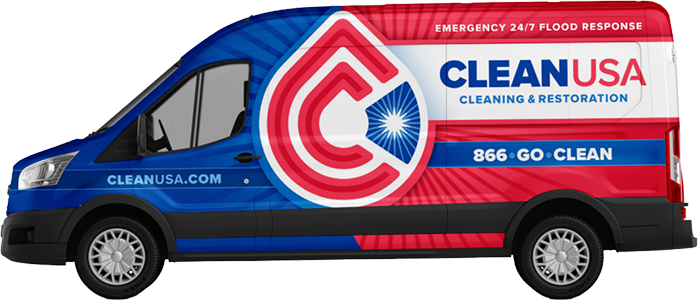When it comes to water damage, avoiding common mistakes is crucial to protecting your home and preventing further damage. By taking the right steps and knowing what to avoid, you can safeguard your property and ensure your safety. In this section, we will explore the key mistakes to avoid when dealing with water damage, providing you with valuable insights and practical tips.
Key Takeaways:
- Delaying action or ignoring water damage can lead to severe consequences.
- Handling extensive damage yourself can worsen the situation and result in additional problems.
- Neglecting proper drying and restoration techniques can lead to long-term damage and mold growth.
- Relying on inadequate or temporary fixes may not address the root cause of the water damage.
- Seeking professional help is essential for effective water damage mitigation and restoration.
Understanding the Dangers of Water Damage
Before we delve into the mistakes to avoid, it is crucial to understand the potential dangers associated with water damage. In this section, we will explore the risks to your home’s structure, electrical systems, and the potential for mold growth.
1. Risks to Your Home’s Structure
Water damage can have a significant impact on the structural integrity of your home. Excessive moisture can weaken the foundation, walls, and floors, leading to sagging, cracks, and even collapse. The longer water damage goes untreated, the greater the risk of irreversible structural damage.
2. Risks to Electrical Systems
Water and electricity do not mix well, and water damage can pose serious risks to your electrical systems. Infiltration of water can damage wiring, outlets, and electrical appliances, increasing the risk of electrical fires or electrocution. It is crucial to shut off power to affected areas and seek professional assistance to safely assess and address any electrical damage.
3. Potential for Mold Growth
One of the major dangers associated with water damage is the potential for mold growth. Mold thrives in moist environments and can spread rapidly, causing respiratory issues, allergies, and other health problems. It is essential to address water damage promptly and thoroughly dry affected areas to prevent the growth and spread of mold.
By understanding these dangers, you can better grasp the importance of taking immediate action when faced with water damage. Ignoring or delaying repairs can result in severe consequences for your home’s structure, electrical safety, and your health.
Delaying Action and Ignoring the Problem
When it comes to water damage, delaying action or ignoring the problem can have severe consequences. Addressing water damage promptly is essential to prevent further damage and mitigate potential risks. Failure to take immediate action can lead to extensive structural damage, costly repairs, and even health hazards. Don’t underestimate the destructive power of water – it can seep into hidden areas and cause hidden damage that may not be apparent until much later.
Ignoring the signs of water damage can exacerbate the problem and make the restoration process more challenging. The longer you wait, the more time water has to penetrate walls, floors, and other porous materials, increasing the likelihood of mold growth and compromising the integrity of your home.
In addition to the physical damage, water damage can also impact your daily life. You may be forced to temporarily evacuate your home, disrupting your routine and causing inconvenience. Moreover, the longer you delay taking action, the longer it will take to restore your home to its pre-damage condition, prolonging the disruption.
Don’t underestimate the urgency of addressing water damage. Act promptly to minimize the extent of the damage and protect your investment.
Trying to Handle Extensive Damage Yourself
While it can be tempting to handle extensive water damage yourself, it’s important to consider the potential risks and complications that may arise. Water damage can cause significant harm to your property, and attempting to handle it without professional assistance can often exacerbate the situation.
When faced with extensive water damage, calling professionals for help is the best course of action. They have the expertise, equipment, and experience to effectively assess the damage and implement the necessary steps for restoration. By relying on their knowledge and skills, you can ensure a thorough and efficient recovery process.
Attempting to handle extensive water damage yourself can lead to various problems. Without proper knowledge of water removal, dehumidification, and structural drying techniques, you may inadvertently cause further damage to your property. Additionally, you may underestimate the extent of the damage, leading to incomplete repairs and potential long-term issues.
It’s important to note that extensive water damage can be challenging to address without professional assistance. Trained experts have the necessary tools and resources to handle even the most severe cases, including specialized equipment to detect hidden moisture and employ effective drying methods.
Calling professionals not only ensures a thorough restoration process but also helps you avoid the physical strain and potential health risks that may come with handling extensive water damage yourself. Water damage can introduce harmful contaminants and foster the growth of mold and bacteria, which can negatively impact your well-being if not properly addressed.
Remember, when faced with extensive water damage, reach out to trusted professionals who can handle the situation with expertise and caution. By doing so, you’ll minimize the risk of further damage, protect your health, and ensure a successful restoration process.
Neglecting Proper Drying and Restoration Techniques
When it comes to water damage, neglecting proper drying and restoration techniques can have severe consequences. Failing to address the issue promptly and effectively can result in long-term damage to your home and even the growth of harmful mold.
Properly drying the affected areas is essential to prevent further deterioration. This involves removing all standing water and thoroughly drying out carpets, furniture, walls, and other materials. Without thorough drying, hidden moisture can linger, leading to structural damage and creating an ideal environment for mold growth.
Using appropriate restoration techniques is equally important. Restoration involves repairing and restoring the damaged areas to their pre-damage condition. This may include structural repairs, replacing damaged materials, and addressing any underlying issues that contributed to the water damage in the first place.
Professional restoration experts have the knowledge, equipment, and experience to handle these tasks effectively. They can assess the extent of the damage, identify hidden moisture, and implement the necessary restoration techniques to ensure thorough drying and prevent future issues.
- Proper drying techniques include the use of specialized equipment such as dehumidifiers, air movers, and moisture meters.
- Restoration techniques may involve repairing leaks, reinforcing weak structures, and applying appropriate coatings to prevent further water intrusion.
By neglecting proper drying and restoration techniques, you risk exacerbating the damage, compromising your home’s structural integrity, and exposing yourself to potential health hazards posed by mold and other contaminants.
Benefits of Professional Drying and Restoration Services
Seeking professional assistance for drying and restoration provides a range of benefits:
- Expertise and knowledge: Professionals have the expertise to assess the damage accurately, identify potential risks, and implement proven restoration techniques.
- Efficiency: With access to advanced equipment, professionals can expedite the drying process and minimize the time required for restoration.
- Prevention of secondary damage: Professional drying and restoration help prevent further damage by addressing hidden moisture and implementing effective solutions.
- Mold prevention: Proper drying techniques significantly reduce the risk of mold growth, protecting your health and preserving the integrity of your home.
| Benefits of Professional Drying and Restoration Services |
|---|
| Expertise and knowledge |
| Efficiency |
| Prevention of secondary damage |
| Mold prevention |
When faced with water damage, it is crucial to prioritize proper drying and restoration techniques. By seeking professional help and ensuring thorough and effective restoration, you can minimize the long-term effects, protect your investment, and ensure a safe and healthy living environment.
Relying on Inadequate or Temporary Fixes
When faced with water damage, it may be tempting to opt for quick, inadequate fixes or temporary solutions. However, this approach can lead to more extensive and costly damage in the long run. It is crucial to address the root cause of the water damage and prioritize a proper and lasting solution.
Temporary fixes, such as using towels to soak up the water or placing buckets to collect leaks, only provide a temporary relief. These inadequate solutions do not address the underlying issue and can result in hidden moisture, structural damage, and the growth of mold and mildew.
Instead of relying on inadequate or temporary fixes, it is essential to take immediate action to mitigate the water damage. Here are some steps to consider:
- Identify the source of the water damage and stop the flow of water, if possible.
- Disconnect any electrical sources in the affected area to avoid potential hazards.
- Remove standing water using a wet/dry vacuum or professional-grade water extraction equipment.
- Thoroughly dry the affected area using dehumidifiers, fans, and proper ventilation.
- Inspect for hidden moisture and use moisture meters or infrared cameras to ensure complete drying.
- Repair and restore any damaged structures or materials to prevent further issues.
By addressing the root cause of the water damage and following proper restoration techniques, you can effectively prevent long-term damage and potential health risks. It is always advisable to seek professional help to ensure a thorough and lasting solution.
Comparing Inadequate Fixes vs. Proper Restoration
| Inadequate Fixes | Proper Restoration |
|---|---|
| Temporary relief | Long-lasting solution |
| Hidden moisture and damage | Thorough drying and damage prevention |
| Potential mold growth | Mold remediation and prevention |
| Increased risks of structural issues | Structural repairs and reinforcement |
Remember, inadequate or temporary fixes for water damage can lead to further problems and costly repairs. By prioritizing proper restoration and addressing the root cause, you can ensure a successful recovery and protect your home from future damage.
Conclusion
In conclusion, by avoiding these common mistakes when dealing with water damage, you can mitigate further damage to your home and safeguard your health. Acting promptly is crucial in minimizing the impact of water damage. As soon as you notice any signs of water damage, such as leaks or flooding, take immediate action to assess the situation and identify the source of the problem.
Seeking professional help is essential when dealing with extensive water damage. Certified water damage restoration experts have the knowledge, experience, and equipment necessary to handle the situation effectively. Don’t hesitate to contact a trusted and reputable restoration company to ensure a successful recovery.
Proper drying and restoration techniques play a vital role in preventing long-term damage and mold growth. Ensure that all affected areas are thoroughly dried and sanitized to eliminate any lingering moisture and potential health hazards. Follow appropriate restoration methods, such as repairing or replacing damaged materials, to restore your home to its pre-damage condition.
Remember, when it comes to water damage, taking proactive measures goes a long way in protecting your home and well-being. By being aware of these common mistakes and taking the necessary precautions, you can navigate through water damage situations with confidence and minimize the impact on your property and health.
FAQ
What are some common mistakes to avoid when dealing with water damage?
When dealing with water damage, it is important to avoid delaying action and ignoring the problem. Trying to handle extensive damage yourself and neglecting proper drying and restoration techniques are also common mistakes to avoid. Additionally, relying on inadequate or temporary fixes can lead to further issues.
What are the potential dangers of water damage?
Water damage can pose various risks to your home’s structure and electrical systems. It can also create an environment conducive to mold growth, which can impact your health. Understanding these dangers is crucial in taking the necessary steps to address water damage promptly.
Why is delaying action or ignoring water damage a mistake?
Delaying action or ignoring water damage can lead to more extensive damage and costly repairs. It can also result in the growth of mold, which can negatively affect your health. Acting quickly and seeking professional help are vital to preventing further consequences.
Should I try to handle extensive water damage myself?
It is not recommended to handle extensive water damage yourself. This can lead to additional problems, as proper expertise and equipment are required for effective restoration. Calling professionals for help ensures that the damage is handled correctly and reduces the risk of further complications.
Why is neglecting proper drying and restoration techniques a mistake?
Neglecting proper drying and restoration techniques can result in long-term damage to your property and create an environment for mold growth. It is crucial to effectively dry affected areas and utilize appropriate restoration methods to prevent future issues.
Why shouldn’t I rely on inadequate or temporary fixes for water damage?
Relying on inadequate or temporary fixes for water damage is not advisable. It is important to address the root cause of the damage to ensure a proper and lasting solution. Temporary fixes can lead to recurring problems and further damage to your home.




